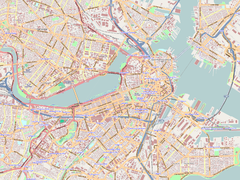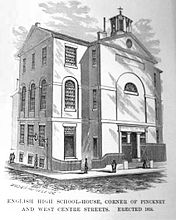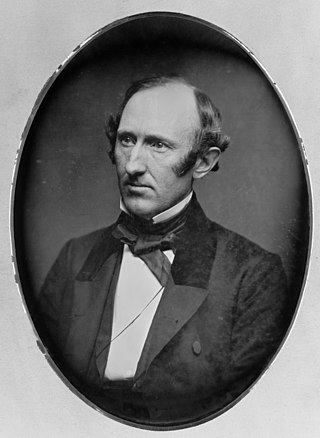
Wendell Phillips was an American abolitionist, advocate for Native Americans, orator, and attorney.

Beacon Hill is a historic neighborhood in Boston, Massachusetts, and the hill upon which the Massachusetts State House resides. The term "Beacon Hill" is used locally as a metonym to refer to the state government or the legislature itself, much like Washington, D.C.'s "Capitol Hill" does at the federal level.
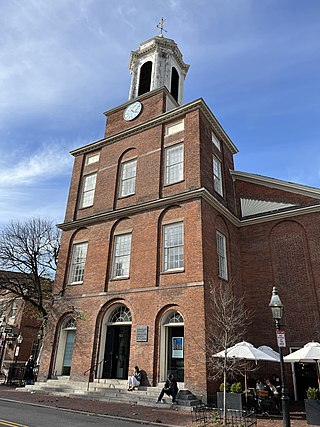
The Charles Street Meeting House is an early-nineteenth-century historic church in Beacon Hill at 70 Charles Street, Boston, Massachusetts.
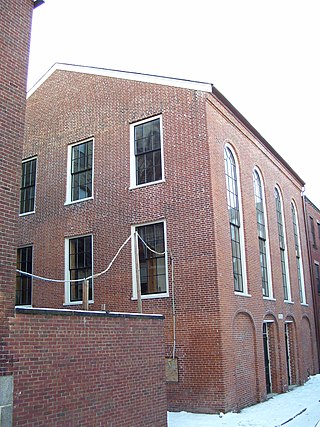
The Boston African American National Historic Site, in the heart of Boston, Massachusetts's Beacon Hill neighborhood, interprets 15 pre-Civil War structures relating to the history of Boston's 19th-century African-American community, connected by the Black Heritage Trail. These include the 1806 African Meeting House, the oldest standing black church in the United States.

Abiel Smith School, founded in 1835, is a school located at 46 Joy Street in Boston, Massachusetts, United States, adjacent to the African Meeting House. It is named for Abiel Smith, a white philanthropist who left money in his will to the city of Boston for the education of black children.

Lewis Hayden escaped slavery in Kentucky with his family and escaped to Canada. He established a school for African Americans before moving to Boston, Massachusetts to aid in the abolition movement. There he became an abolitionist, lecturer, businessman, and politician. Before the American Civil War, he and his wife Harriet Hayden aided numerous fugitive slaves on the Underground Railroad, often sheltering them at their house.

The Boston Vigilance Committee (1841–1861) was an abolitionist organization formed in Boston, Massachusetts, to protect escaped slaves from being kidnapped and returned to slavery in the South. The Committee aided hundreds of escapees, most of whom arrived as stowaways on coastal trading vessels and stayed a short time before moving on to Canada or England. Notably, members of the Committee provided legal and other aid to George Latimer, Ellen and William Craft, Shadrach Minkins, Thomas Sims, and Anthony Burns.

William Cooper Nell was an African-American abolitionist, journalist, publisher, author, and civil servant of Boston, Massachusetts, who worked for the integration of schools and public facilities in the state. Writing for abolitionist newspapers The Liberator and The North Star, he helped publicize the anti-slavery cause. He published the North Star from 1847 to 18xx, moving temporarily to Rochester, New York.
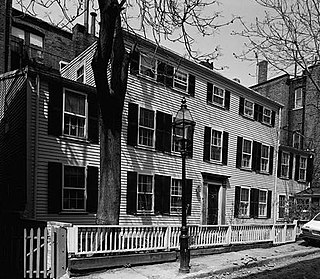
The William C. Nell House, now a private residence, was a boarding home located in 3 Smith Court in the Beacon Hill neighbourhood of Boston, Massachusetts, opposite the former African Meeting House, now the Museum of African American History.

Robert Morris was one of the first African-American attorneys in the United States, and was called "the first really successful colored lawyer in America."

John J. Smith House was the home of John J. Smith from 1878 to 1893. Smith was an African American abolitionist, Underground Railroad contributor and politician, including three terms as a member of the Massachusetts House of Representatives. He also played a key role in rescuing Shadrach Minkins from federal custody, along with Lewis Hayden and others.

John James Smith was a barber shop owner, abolitionist, a three-term Massachusetts state representative, and one of the first African-American members of the Boston Common Council. A Republican, he served three terms in the Massachusetts House of Representatives. He was born in Richmond Virginia. He took part in the California Gold Rush.
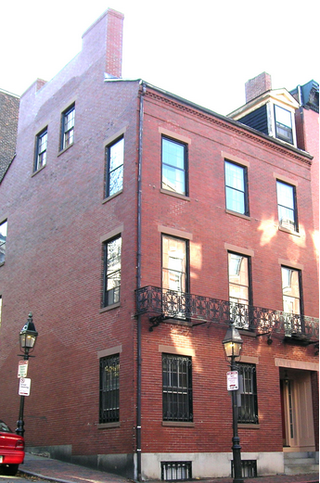
The John Coburn House was the home of John P. Coburn (1811–1873), an African-American abolitionist who aided people on the Underground Railroad. The home is currently a private residence. It is on the Black Heritage Trail and its history is included in walking tours by the Boston African American National Historic Site.

Lewis and Harriet Hayden House was the home of African-American abolitionists who had escaped from slavery in Kentucky; it is located in Beacon Hill, Boston. They maintained the home as a stop on the Underground Railroad, and the Haydens were visited by Harriet Beecher Stowe as research for her book, Uncle Tom's Cabin (1852). Lewis Hayden was an important leader in the African-American community of Boston; in addition, he lectured as an abolitionist and was a member of the Boston Vigilance Committee, which resisted the Fugitive Slave Act of 1850.

John Telemachus Hilton was an African-American abolitionist, author, and businessman, who established barber, furniture dealer, and employment agency businesses. He was a Prince Hall Mason and established the Prince Hall National Grand Lodge of North America and served as its first National Grand Master for ten years. He also was a founding member of the Massachusetts General Colored Association, and active member and author in the Anti-Slavery movement.
The Boston Women's Heritage Trail is a series of walking tours in Boston, Massachusetts, leading past sites important to Boston women's history. The tours wind through several neighborhoods, including the Back Bay and Beacon Hill, commemorating women such as Abigail Adams, Amelia Earhart, and Phillis Wheatley. The guidebook includes seven walks and introduces more than 200 Boston women.
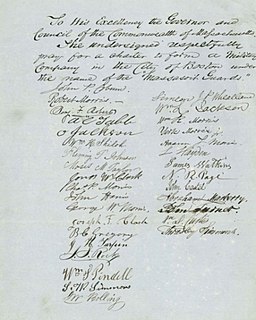
The Massasoit Guards were an African-American militia company active in 1850s Boston. Clothing retailer John P. Coburn founded the group to police Beacon Hill and protect residents from slave catchers. Attorney Robert Morris repeatedly petitioned the Massachusetts legislature on their behalf, but the Massasoit Guards were never officially recognized or supported by the state. The group was a precursor to the 54th Massachusetts Regiment.
John P. Coburn (1811–1873) was a 19th-century African-American abolitionist, civil rights activist, tailor and clothier from Boston, Massachusetts. For most of his life, he resided at 2 Phillips Street in Boston's Beacon Hill neighborhood. Coburn was one of the wealthiest African Americans in Boston of his time. His property on the North Slope of Beacon Hill had the third highest real property value in an 1850 census. Coburn was heavily involved in abolition-related work within his community, specifically work related to the New England Freedom Association and the Massasoit Guards.

Harriet Bell Hayden (1816-1893) was an African-American antislavery activist in Boston, Massachusetts. She and her husband, Louis Hayden, were the primary operators of the Underground Railroad in Boston and also aided the John Brown slave revolt conspiracy.
Elizabeth Cook Riley was an African-American Bostonian abolitionist who aided in the escape of fugitive slave Shadrach Minkins. She was a member of the committee which raised the first funds towards William Lloyd Garrison's The Liberator, a prominent antislavery newspaper. Afterwards, she was active in the Boston abolitionist community, helping to organize meetings and events.

